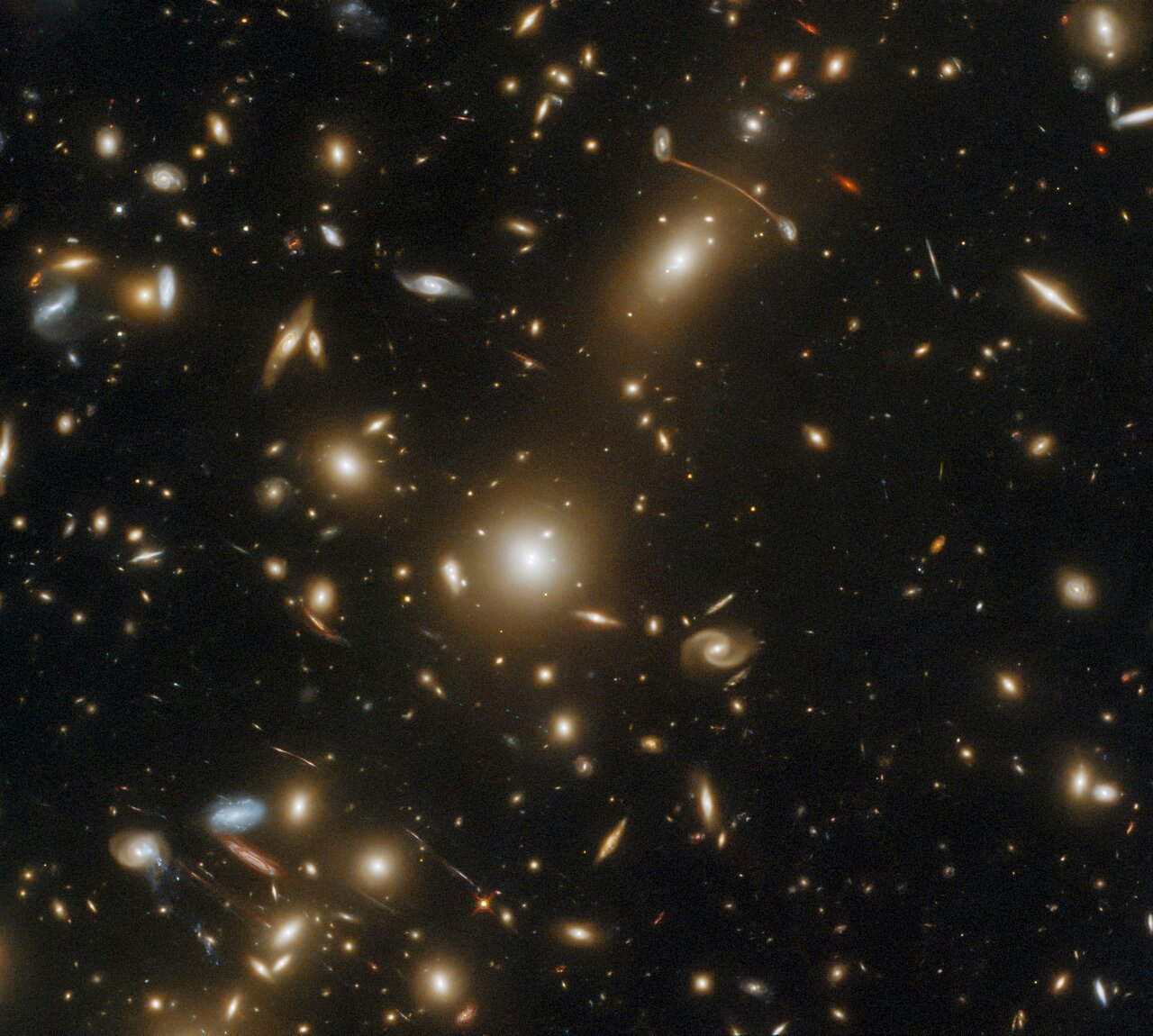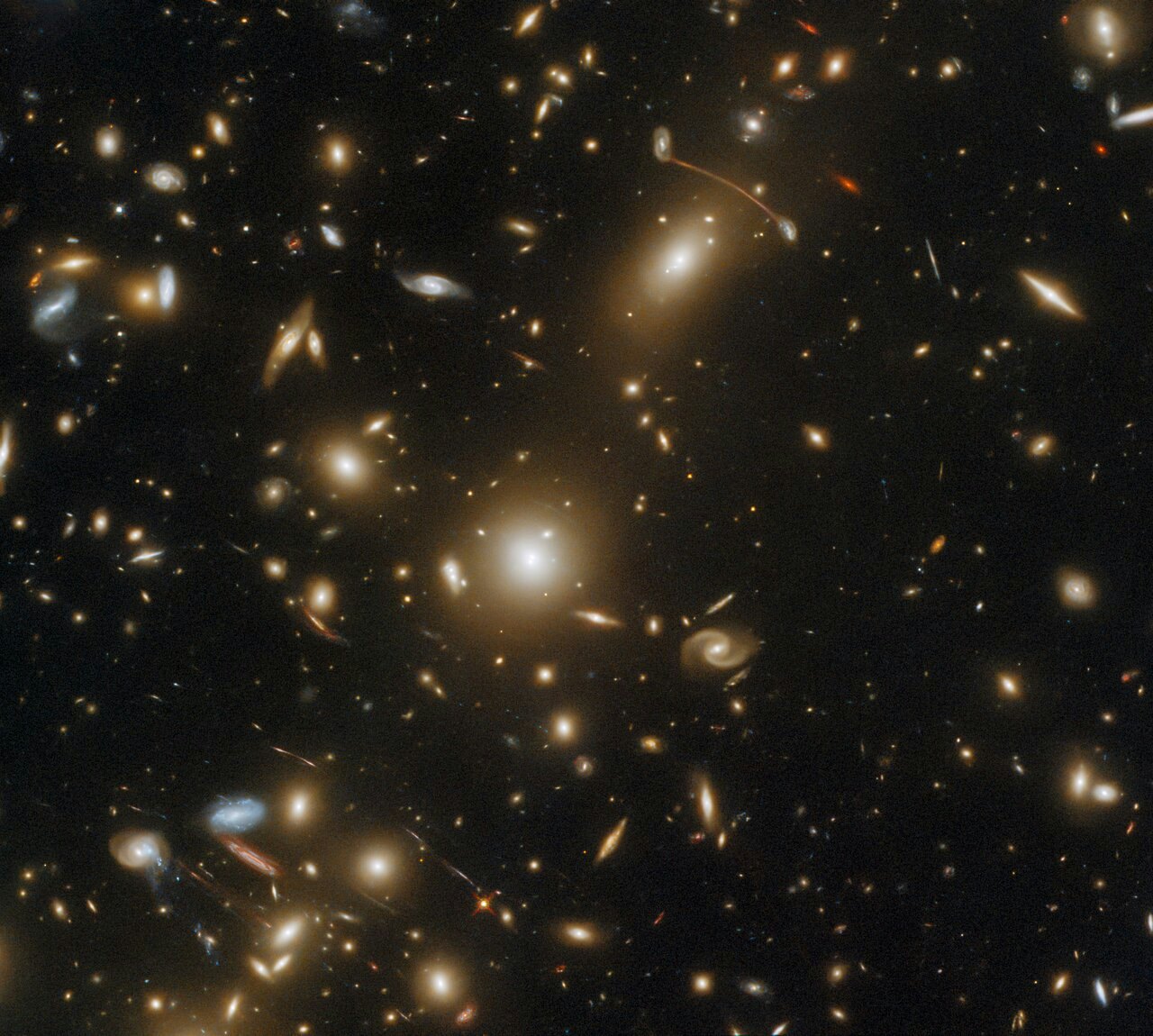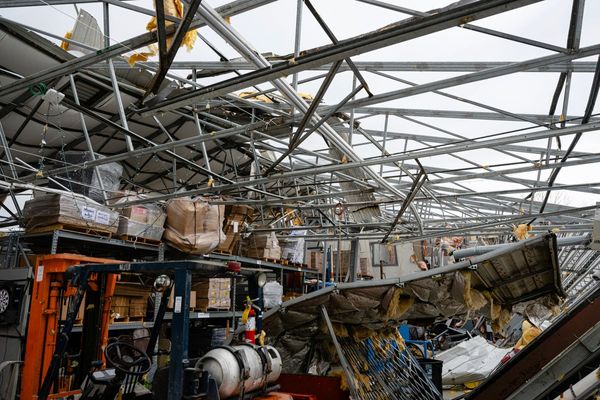
Abell 1351, a close-knit group of about 100 galaxies bound together by gravity, is so massive that its gravity distorts spacetime.
Thanks to that warping of the very fabric of existence, light that would have followed a straight line through the galaxy cluster instead traces a curving path around it. You can see the result in this recent image from the Hubble Space Telescope: curved streaks of light dancing among the spiral galaxies.
Those curved streaks are actually light from galaxies even further away than the ones in Abell 1351 (whose nearest galaxies are about 4 billion light years from Earth). Instead of traveling in a straight line, the light from these much more distant galaxies curves, because it’s passing through curved spacetime. The result is like what happens when light passes through curved glass: the lens distorts but magnifies the light.

Astronomers call the phenomenon gravitational lensing. Under the right conditions, it can produce duplicate images or rings of light, called Einstein rings, around a lensing object. And when the James Webb Telescope starts its science mission later this summer, gravitational lensing will help the telescope look even deeper into the universe than Webb’s instruments could see by themselves.
University of California, Los Angeles astrophysicist Tommaso Treu leads the team making the some of the first Webb observations of the early universe. His team will focus Webb on another galaxy cluster, Abell 2744, and they’ll use the cluster’s gravitational lens to study magnified light from very faint galaxies 13.3 billion light years away. That light is a relic of the period when the first galaxies were forming.
Abell 2744 is a good galaxy cluster to use as a gravitational lens because astronomers have already studied it in detail using Hubble. It’s another example of how Hubble built the foundation for Webb’s science mission.
“The fact that we know it so well means that we can calculate very precisely the properties of the lens. Using our models, we can compute very accurately how the background images have been distorted,” Treu said in a statement. “Then we can invert that to figure out the intrinsic properties of the objects as they would look without the lens in front.”







